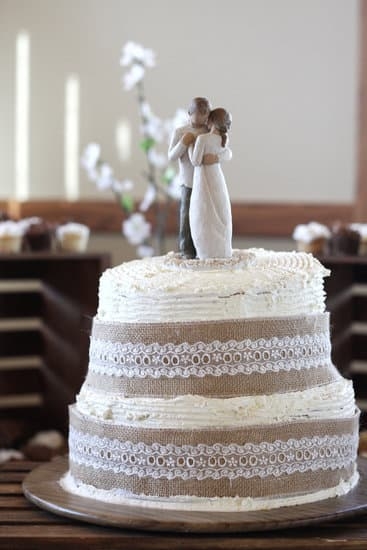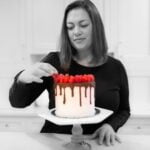Fondant icing is a versatile and popular choice for decorating cakes, known for its smooth texture and ability to create intricate designs. In this article, we will guide you through the process of how to make fondant icing cake decorations. Whether you are a beginner or an experienced baker, mastering the art of working with fondant can elevate your cake decorating skills to the next level.
Fondant is a pliable sugar paste that can be molded into various shapes, making it ideal for creating detailed decorations like flowers, figures, and more. Its smooth finish gives cakes a professional look, perfect for special occasions such as birthdays, weddings, or other celebrations. Unlike buttercream frosting, fondant provides a clean canvas for artistic expressions with vibrant colors and unique textures.
In the following sections, we will explore the materials needed to make fondant icing decorations from scratch and provide you with a step-by-step guide on achieving the perfect consistency. Additionally, we’ll discuss techniques for coloring fondant, rolling it out, using molds for intricate designs, adding texture for depth, as well as troubleshooting common issues that may arise during the process. Join us on this creative journey of crafting beautiful and unforgettable cake decorations with fondant icing.
Materials Needed
Fondant icing is a popular choice for cake decorators due to its smooth finish and versatility in creating intricate designs. To make fondant icing cake decorations, you will need a few essential tools and ingredients to get started. Here is a detailed list of everything you will need to create beautiful fondant decorations for your cakes.
First and foremost, you will need powdered sugar or confectioners’ sugar as the base ingredient for making fondant icing. Gelatin or agar powder is also required to give the fondant its pliable and stretchy texture. Additionally, you will need shortening or vegetable oil to prevent the fondant from sticking while rolling it out.
In terms of tools, a mixing bowl, spatula, and measuring cups are necessary for preparing the fondant icing mixture. A stand mixer with a paddle attachment can also be used for easier mixing. Rolling pins, fondant smoothers, and various sized cookie cutters are essential for rolling out the fondant and cutting it into different shapes for decorations. Finally, food coloring gels or powders are needed to add vibrant colors to your fondant decorations.
Now that you have gathered all the necessary materials, you can follow a step-by-step guide on how to make fondant icing from scratch. The process involves combining the powdered sugar with gelatin (or agar) mixture and adding flavoring if desired.
Kneading the mixture until smooth and pliable is crucial for achieving the right consistency for shaping and decorating cakes. With these tools and ingredients in hand, you are well-equipped to create stunning fondant icing cake decorations that will impress your friends and family.
Step-by-Step Guide
Fondant icing is a versatile and popular choice for cake decorations due to its smooth finish and ability to be molded into intricate designs. Making fondant icing from scratch may seem intimidating at first, but with the right tools and techniques, you can achieve the perfect consistency for your cake decorations. Here is a step-by-step guide on how to make fondant icing from scratch:
- Start by gathering all the necessary ingredients: powdered sugar, gelatin, water, glycerin, and flavoring (if desired).
- In a microwave-safe bowl, mix gelatin and water together and let it sit for a few minutes until it becomes spongy. Then heat the mixture in the microwave until the gelatin completely dissolves.
- Add glycerin and flavoring to the gelatin mixture, then gradually mix in powdered sugar until it forms a dough-like consistency.
- Knead the fondant on a clean surface dusted with powdered sugar until it is smooth and pliable. If the fondant is too sticky, add more powdered sugar; if it’s too dry, add a few drops of water.
- Wrap the fondant in plastic wrap and let it rest for at least 30 minutes before using it to decorate your cakes.
Mastering the art of making fondant icing from scratch takes practice, but with patience and these tips, you can create beautiful decorations for your cakes. Remember to store any leftover fondant in an airtight container to prevent it from drying out. Now that you’ve learned how to make fondant icing cake decorations from scratch, the possibilities are endless for creating stunning designs to impress your friends and family.
- Experiment with different colors by adding food coloring or gel paste to your fondant before kneading it.
- To prevent air bubbles from forming when rolling out your fondant, gently knead and stretch it before use.
Coloring Fondant
Fondant icing is a popular choice for cake decorations due to its smooth texture and ability to be molded into intricate designs. One of the key aspects of working with fondant is adding color to create vibrant decorations that can truly make a cake stand out. Mastering the art of coloring fondant can take your cake decorating skills to the next level, allowing you to unleash your creativity and customize your creations for any occasion.
To start coloring fondant, you will need gel food coloring in various shades depending on the design you want to achieve. Gel food coloring is preferred over liquid food coloring as it does not alter the consistency of the fondant.
To incorporate the color into the fondant, knead small amounts of gel food coloring into the fondant until you reach your desired shade. Remember that a little goes a long way when it comes to coloring fondant, so add color gradually to avoid making it too dark.
Another technique for coloring fondant is using pre-colored fondant and mixing different shades together to create custom colors. By blending different colors or layering them strategically, you can create unique hues and gradients for your cake decorations. For intricate designs that require precise colors, consider using edible dust or airbrushing techniques to add details and dimension to your fondant decorations. Experiment with different color combinations and techniques to discover endless possibilities for creating visually stunning cakes with fondant icing.
| Coloring Fondant Tip | Details |
|---|---|
| Use gel food coloring | Knead small amounts into fondant gradually |
| Mix pre-colored fondants | |
| Try edible dust or airbrushing |
Rolling and Cutting
Fondant icing is a versatile and popular choice for cake decorations due to its smooth finish and ability to be molded into various shapes and designs. A key aspect of working with fondant is knowing how to roll it out properly and cut it into different shapes to adorn cakes with beautiful decorations. Whether you are a beginner or an experienced baker, mastering the art of rolling and cutting fondant can elevate the look of your baked creations.
To begin, make sure you have a clean and smooth work surface lightly dusted with powdered sugar or cornstarch to prevent the fondant from sticking. Knead the fondant in your hands until it becomes pliable, then use a rolling pin to flatten it out evenly into a thin sheet.
Take care not to roll the fondant too thinly, as it may tear when being lifted or placed on the cake. Once you have achieved the desired thickness, you can proceed to cut out different shapes using cookie cutters, sharp knives, or specialized fondant cutting tools.
When cutting out shapes from fondant, work swiftly but carefully to ensure clean edges and precise designs. If you are looking to create intricate decorations such as flowers or patterns, consider using small sculpting tools or toothpicks for detailing.
Remember that fondant dries quickly once exposed to air, so it’s essential to work efficiently when rolling and cutting out shapes. With practice and patience, you can master the art of creating stunning fondant decorations that will impress your friends and family at any special occasion.
| Tips for Rolling Out Fondant | Tips for Cutting Fondant Shapes |
|---|---|
| Use powdered sugar or cornstarch on your work surface | Work swiftly but carefully for clean edges |
| Knead fondant until pliable before rolling | Consider using small sculpting tools for detailing |
| Avoid rolling out fondant too thinly | Efficiently work as fondant dries quickly |
Using Molds
One of the key techniques in creating intricate and detailed fondant decorations for cakes is using molds. Molds provide a simple yet effective way to add intricate designs and shapes to your cake decorations without the need for advanced sculpting skills. Whether you’re looking to create delicate flowers, intricate patterns, or fun shapes, molds can help you achieve professional-looking results with ease. Here are some tips on using molds effectively for fondant icing cake decorations.
Choosing the Right Mold
When it comes to using molds for fondant decorations, selecting the right mold is crucial. Look for silicone molds specifically designed for use with fondant icing as they are flexible and easy to work with. Additionally, choose molds that cater to the specific design or shape you want to create on your cakes. From floral patterns to geometric shapes, there is a wide variety of molds available to suit different styles and themes.
Preparing the Fondant
Before using molds, it’s important to prepare your fondant properly. Knead the fondant until it is smooth and pliable, ensuring there are no cracks or dry spots. Dust your work surface with powdered sugar or cornstarch to prevent the fondant from sticking.
Once your fondant is ready, roll it out evenly into a thin layer using a rolling pin. Make sure the rolled-out fondant is larger than the mold you plan to use so that it covers all areas of the mold when pressed.
Pressing and Releasing
To create detailed fondant decorations using molds, gently press the rolled-out fondant onto the mold’s surface, making sure all parts of the design are covered. Use a small rolling pin or your fingers to apply even pressure while pressing down on the mold.
Once you’ve pressed firmly enough, carefully release the molded fondant by peeling away excess around the edges first before gently popping out the decoration from the mold. Allow the molded decoration to set and firm up before attaching it to your cake with edible glue or royal icing.
By mastering the art of using molds for creating fondant decorations, you can elevate your cake decorating skills and impress your friends and family with professionally crafted treats for any occasion. Experiment with different mold designs, colors, and textures to unleash your creativity and add a touch of elegance and charm to your cakes effortlessly using this versatile technique on how to make fondant icing cake decorations.
Texturing Fondant
Fondant icing is a versatile and popular choice for cake decorations due to its smooth finish and ability to be molded into intricate designs. Adding texture to fondant decorations can elevate the overall look of a cake and give it a professional touch. There are several techniques that can be used to achieve different textures on fondant icing, allowing for endless creativity in cake decorating.
One way to add texture to fondant is by using tools such as embossing mats, textured rolling pins, or even everyday items like toothpicks or skewers. These tools can create patterns, lines, or indentations on the surface of the fondant, adding dimension and visual interest to your cake decorations. For a more organic and rustic look, crumpling or ruffling the fondant before applying it to the cake can also create a unique texture that mimics fabric or natural elements.
Another technique for texturing fondant is by painting or airbrushing edible colors onto the surface. By using different shades and blending techniques, you can create subtle gradients or bold color contrasts that enhance the texture of the fondant decorations.
Additionally, dusting powdered sugar or edible luster dust over textured fondant can further highlight the details and add a shimmering effect to your cake designs. Experimenting with different combinations of tools, colors, and finishes will help you discover endless possibilities for creating textured fondant decorations that stand out on any cake.
Incorporating texture into fondant icing cake decorations adds depth and visual appeal to your baked creations. Whether you prefer simple patterns or intricate designs, mastering various texturing techniques will allow you to personalize your cakes and showcase your artistic skills. With practice and experimentation, you can use these methods to bring your cake decorating ideas to life and impress friends and family with beautifully textured fondant creations for any special occasion.
Decorating Ideas
Weddings
Fondant icing is a popular choice for creating elegant and intricate cake decorations for weddings. One creative idea is to use fondant to make delicate sugar flowers that can be arranged in beautiful cascades on the cake tiers.
Additionally, fondant can be molded into intricate lace patterns or even personalized with the bride and groom’s initials or wedding date. The smooth finish of fondant also provides the perfect canvas for hand-painted designs or edible gold leaf accents, adding a touch of luxury to the wedding cake.
Birthdays
For birthday cakes, fondant icing offers endless possibilities for fun and whimsical decorations. One creative idea is to use brightly colored fondant to create playful shapes like balloons, presents, or cartoon characters to adorn the cake.
Fondant can also be shaped into 3D objects like cars, animals, or even favorite superheroes for themed birthday parties. Another fun idea is to incorporate edible glitter or shimmer dust into the fondant for a sparkly effect that will add a touch of magic to any birthday celebration.
Holidays
During holidays like Christmas, Easter, or Halloween, fondant icing can be used to create festive and seasonal decorations for cakes. For Christmas cakes, fondant can be shaped into miniature snowflakes, holly leaves, or even Santa Claus figures to capture the spirit of the season.
Easter cakes can be decorated with pastel-colored fondant flowers, eggs, and bunnies to celebrate springtime. And for Halloween cakes, spooky creatures like ghosts, witches, and black cats made from black and orange-tinted fondant are sure to delight party guests of all ages.
By experimenting with different colors, shapes, textures, and techniques when working with fondant icing, you can unleash your creativity and bring your cake decorating visions to life. Whether it’s a wedding cake that exudes elegance and sophistication or a whimsical birthday cake that sparks joy and laughter, fondant icing offers endless possibilities for creating stunning cake decorations for any occasion.
So get inspired by these creative ideas and let your imagination run wild as you explore how to make fondant icing cake decorations that will truly wow your friends and family.
Troubleshooting
Working with fondant icing can be a rewarding experience, but like any baking or decorating technique, it can come with its fair share of challenges. One common issue that many bakers face when working with fondant is the dreaded cracking. Cracks can appear in fondant decorations due to a variety of reasons, such as dry environment, improper storage, or overworking the fondant.
To fix this issue, you can try kneading the fondant with a small amount of vegetable shortening to restore its moisture and flexibility. You can also use a smoothing tool to gently press the cracks together and smooth them out.
Another common problem when working with fondant icing is air bubbles forming beneath the surface of decorations. These pesky bubbles can ruin the smooth look of your cake decorations if left unattended. To prevent air bubbles from forming, make sure to knead and roll out your fondant on a clean, smooth surface.
If air bubbles do appear, gently poke them with a pin and use a smooth tool to press out the excess air. Be sure to smooth out the area afterward to ensure a flawless finish.
Lastly, one issue that may arise when working with fondant icing is color bleeding. This occurs when colored fondant decorations transfer their color onto the base cake or other decorations due to moisture or condensation. To prevent color bleeding, make sure your cake and decorations are completely dry before adding fondant elements.
You can also lightly dust cornstarch on colored decorations before placing them on the cake to absorb excess moisture. Additionally, consider using gel food coloring instead of liquid coloring for deeper shades that are less likely to bleed onto other surfaces.
By keeping these troubleshooting tips in mind and being prepared for any issues that may arise, you can confidently create stunning fondant icing cake decorations without any hiccups along the way.
Conclusion
In conclusion, mastering the art of how to make fondant icing cake decorations can truly elevate your baking skills and take your cakes to the next level. Fondant icing offers a beautiful and versatile way to create intricate and eye-catching decorations that are sure to impress any audience. From simple shapes to intricate details, the possibilities are endless when working with fondant.
The step-by-step guide provided in this article, along with tips on coloring, rolling, cutting, using molds, texturing, and troubleshooting, gives you a comprehensive overview of the process. By following these instructions and practicing your skills, you will soon be able to create stunning fondant decorations for any occasion.
So next time you’re looking to add that extra special touch to your cakes, consider using fondant icing as your go-to decoration. With a little practice and creativity, you’ll be amazed at the professional-looking results you can achieve. Whether it’s a birthday cake, wedding cake, or any other celebration, fondant icing opens up a world of possibilities for creating beautifully decorated treats that will leave a lasting impression on everyone who sees and tastes them.
Frequently Asked Questions
How Do You Make Fondant Decorations?
Fondant decorations can be made by rolling out fondant, cutting it into desired shapes using cookie cutters or a knife, and allowing them to dry and harden. Coloring with food coloring is optional for customization.
How Far in Advance Can You Make Fondant Decorations for a Cake?
Fondant decorations can typically be made in advance, up to a few weeks before they are needed for the cake. Store them in an airtight container at room temperature, away from direct sunlight.
How Do You Get Fondant Decorations to Stick to a Cake?
To get fondant decorations to stick to a cake, you can use edible glue or water as adhesive. Lightly brush the back of the decoration with either option before placing it on the cake surface. Press gently to secure it in place.

Welcome to our cake decorating blog! My name is Destiny Flores, and I am the proud owner of a cake decorating business named Cake Karma. Our mission is to provide delicious, beautiful cakes for all occasions. We specialize in creating custom cakes that are tailored specifically to each customer’s individual needs and tastes.





